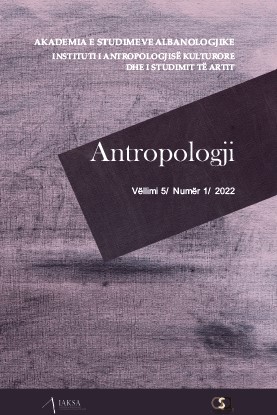METAFORAT HAPËSINORE TË MODERNITETIT: SHQIPËRIA E MESME NË IMAGJINATËN SOCIOLINGUISTIKE
SPATIAL METAPHORS OF MODERNITY: CENTRAL ALBANIA IN THE SOCIOLINGUISTIC IMAGINATION
Author(s): Carrie Ann MorganSubject(s): Semiotics / Semiology, Regional Geography, Phonetics / Phonology, Comparative Linguistics, Sociolinguistics
Published by: Akademia e Shkencave e Shqipërisë – Instituti i Antropologjisë (until 2024 -Akademia e Studimeve Albanologjike)
Keywords: linguistic division; semiotic processes; sociolinguistics; enregisterment; dialectology;
Summary/Abstract: Twentieth century political changes have resulted in alternative enregisterments (Agha 2007) of Albanian linguistic space. Although the Geg (North)-Tosk (South) split along the Central Albanian Shkumbin River is a fundamental principle of Albanian dialectology (Friedman 2005, 33), many non-linguists believe there is a tripartite dialectological division between North, Central, and South Albanian. The Central Albanian region lies geographically in the southern-most part of Geg territory and linguists classify it as a sub-dialect of Geg. In order to explain how and why the North-Center-South enregisterment has emerged alongside the North- South enregisterment, I analyze the way semiotic processes of differentiation (Irvine & Gal, 2000) operate in metalinguistic data from ethnographic fieldwork (interviews, map task, participant observation), social media, and academic discourses. These data demonstrate that nationstate formation processes, including language standardization and urbanization, contributed to the emergence of the North-Center-South enregisterment because these politics posited Central Albania as a modern, urban space and shifted the anchor metaphor (Gal 2005) of difference based on personhood to one based on space.
Journal: Antropologji
- Issue Year: 5/2022
- Issue No: 1
- Page Range: 27-50
- Page Count: 24
- Language: Albanian

